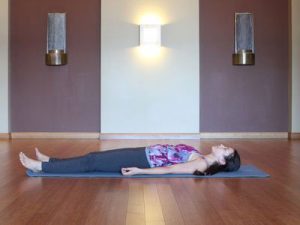I recently got asked by a good friend of mine in America what he should wear to a yoga class and what to buy to take with him. After a good hour of chatting online, I realised this would actually be a useful blog post for anyone starting their yoga journey.
For some people, their first yoga class can be incredibly daunting. The fear that everyone there will be far more advanced, balancing on every part of their body except their feet. It’s also common to feel intimidated by all the poses and wishing you had looked up what the word ‘asana’ meant. Then on top of all that, wondering what on earth to wear and what you need to bring to a class.
Well first, don’t worry. I appreciate that’s easier said than done but there really is no need to stress out before you attend your first session. We have all been there. I remember my first class in Shanghai and being surrounded by the tiniest most flexible bodies I had ever seen. Everyone was meditating and I didn’t know whether I was supposed to join in or not, so I grabbed a mat and went to the back of the room hoping I could hide away in the small, 360 degree mirrored room. Fat chance, but being at the back in the corner at least made me feel better. I am now the exact opposite!
 Back then, I knew nothing of etiquette or what to bring. There was a notice on the door saying ‘Silence! No entry once class starts’, but that was my only introduction. I supposed it didn’t help that I was in a Chinese studio where English was pretty scarce, but I had absolutely no idea what to expect. I did learn pretty quickly that my old sweat pants and Abercrombie and Fitch T-shirt were not appropriate attire for a hot yoga class and bringing in a teacup of water was absolutely pointless.
Back then, I knew nothing of etiquette or what to bring. There was a notice on the door saying ‘Silence! No entry once class starts’, but that was my only introduction. I supposed it didn’t help that I was in a Chinese studio where English was pretty scarce, but I had absolutely no idea what to expect. I did learn pretty quickly that my old sweat pants and Abercrombie and Fitch T-shirt were not appropriate attire for a hot yoga class and bringing in a teacup of water was absolutely pointless.
So, you have made the mental decision to try a yoga class. Good for you! You have checked out the timetable at your local studio, you’ve made the phone call or sent an email and booked yourself in. Awesome.
Right……what now?
If you haven’t already, it is worth doing a little bit of research on the different styles of yoga and the ones that are available at your local studio. Yoga studios and teachers usually have explanations of all the classes they offer on their websites.
Back to when I first started looking for a class, I knew I wanted to try hot yoga as I loved the idea of being able to stretch a little deeper than I could in a regular class, and I definitely wanted a faster paced class so for me Vinyasa yoga was a natural choice. I then tried every session going and discovered there were many styles I loved and some that didn’t quite work for me.
What to wear
The first thing you need is to be comfortable. You will be stretching a lot in class, so wear clothing that allows for that. For women, a decent sports bra and tight fitting top is a good idea if you practise inversions. In my opinion the sports bras at Marks and Spencer are just brilliant because rather than small, medium and large they do actual bra sizes which I find are a far better fit. I once made the mistake of wearing a baggy T-shirt to class and my first attempt at a headstand meant the entire class got an eyeful. Needless to say, I did not make that error again.

If you feel a little self conscious wearing tight clothing then you can always tuck your top in to your yoga pants, but it is worth being aware if you ever go upside down in a class.
For guys, as long as you are comfortable and can stretch anything goes really. Most guys tend to wear shorts and a T-shirt but a lot of this comes down to personal preference.
There are times you can find yourself in an environment that feels like a yoga fashion show stocking the entire back catalogue of Lululemon. I never really understood that. Don’t get me wrong, I have a penchant for mad print leggings and I am rapidly becoming obsessed with yoga toe socks but that’s mainly because I spend a lot of time in my yoga gear and wanted to cheer up that part of my wardrobe. The reality is you need to feel comfortable in what you wear and make sure you can stretch.
In my opinion, it is worth buying Dri Fit, Climacool, or similar quick-drying clothing. The faster paced classes and hot yoga will make you perspire and that doesn’t feel particularly nice during the winding down section of your class and when resting in Corpse pose or Savasana if you have what is essentially a sopping wet T-shirt.
Just before class
You should come to class on an empty stomach leaving at least 90 minutes to 2 hours since you last ate. If you come to class just after eating a meal, the energy that is needed for digestion is redirected to the muscles and the body is unable to digest food properly. It can also feel uncomfortable. During my training, many of the girls used to pop down to the local noodle shop and have the biggest bowl of carbs you have ever seen. By mid afternoon they were all bloated, sleepy and unable to focus on practice. They quickly learnt the hard way that maybe a big portion of noodles before yoga wasn’t the best idea. If you follow the 90 minute / 2 hour rule, energy will be focused on the poses and you will maximise the benefits of your practice.
 Another tip is to make sure you get to the studio in plenty of time. The usual etiquette is to arrive 10-15 minutes before class starts. I usually use this time to relax and focus on my breathing or do a few exercises to open up my shoulders. Other people wait in a comfortable sitting position and meditate. I am not usually one for heavy etiquette rules but I do think arriving early is important. If you are running late and you are still allowed in the class (some classes do not allow you entry once class has started), make sure you enter the room as quietly as possible. Yoga requires a lot of concentration and focus and it can be really distracting if there are late arrivals.
Another tip is to make sure you get to the studio in plenty of time. The usual etiquette is to arrive 10-15 minutes before class starts. I usually use this time to relax and focus on my breathing or do a few exercises to open up my shoulders. Other people wait in a comfortable sitting position and meditate. I am not usually one for heavy etiquette rules but I do think arriving early is important. If you are running late and you are still allowed in the class (some classes do not allow you entry once class has started), make sure you enter the room as quietly as possible. Yoga requires a lot of concentration and focus and it can be really distracting if there are late arrivals.
Finally, switch off your phone. Your yoga practice is ‘you’ time and for an hour or however long the duration of your class everything else can wait. It is also the most annoying thing in the world hearing a phone beep or vibrate. Think about others and just have a bit of respect. It’s zen time and all that jazz.
What to bring
Most yoga studios will have the essentials you need for a class. It is worth checking out beforehand if the studio or teacher provide mats. If mats are not available, you may need to bring your own mat or sometimes you can rent them for a small fee.
I am a bit of a hygiene freak and I have attended some classes where the mats available are pretty grotty. One studio I went to insisted they cleaned their mats but they never did – and this was a place that offered hot yoga! Pretty grim.
To protect yourself from this, you can purchase a yoga towel to go on top of your mat. There is a fab selection on Amazon and places like Target and all the popular yoga brands sell them. The first one I bought was really cheap because I just wanted something to go over the mats I was using at the studio, but just like anything you can spend a little or a lot. If you fancy yourself as a dab hand with a needle, you can always sew small pieces of elastic at the corners of the towel so you can loop them over the corners of the mat so in class the towel won’t move too much when you are moving through the poses.
A smaller second towel is worth taking with you. Depending on the class you can get rather sweaty, so I like to take an additional towel where I can mop my brow. For slower classes, like restorative or yin yoga you probably won’t need a second towel but I like to take one anyway.

If you want to go the whole hog and buy your own mat, again yoga mats can be as cheap or as expensive as you can imagine. Like most things you do get what you pay for, but for a beginner I wouldn’t recommend spending a fortune. You want something reasonable but at the same time unless you are going to commit to practising regularly it really isn’t worth spending a lot of money.
Purchasing a mat requires a blog post in its own right which I will do at some point, but for now there are just a few tips I would mention if you do decide to buy your own mat. It is a very personal choice. I always look for mats that are non slip because I tend to sweat a lot and I also have a yoga mat for when I am travelling that won’t take up too much space in my suitcase. After all, I need that space for shoes!
If you have any discomfort in your knees buy a slightly thicker mat. You can also fold your mat to provide extra padding for your knees and sometimes studios have blankets you can use.
If you use props in your class then more often than not they will be provided. I always like to use a block and a strap as they facilitate alignment and allow you to open up in many of the poses, but the studio should have these available. If you later want to develop your practice in your own time you can buy blocks and straps for a really reasonable price.
 Also worth adding to your yoga kit bag is a hoody or a sweater. At the end of a class, students will be guided by the teacher into Savasana or Corpse pose. Savasana is the most important part to any practice and is a chance for your body to wind down after all that stretching, but you can get a tad chilly. Sometimes there are blankets at the studio but I always take a sweater with me and sometimes a pair of socks. You want to be able to rest in this pose, calm the mind and relax. You don’t want to be thinking the entire time ‘brrrrrrrrrrrr’.
Also worth adding to your yoga kit bag is a hoody or a sweater. At the end of a class, students will be guided by the teacher into Savasana or Corpse pose. Savasana is the most important part to any practice and is a chance for your body to wind down after all that stretching, but you can get a tad chilly. Sometimes there are blankets at the studio but I always take a sweater with me and sometimes a pair of socks. You want to be able to rest in this pose, calm the mind and relax. You don’t want to be thinking the entire time ‘brrrrrrrrrrrr’.
Finally, make sure you take a bottle or flask of water with you. Some yoga teachers are not keen on you drinking during a class but I always like to have fluids with me and stay hydrated. I used to get terrible headaches from dehydration because I never drank enough water before class. This is so important and common sense really but very easy to get wrong.
Checklist
To summarise and save you reading through this post all over again, here is my checklist for what tends to go in my yoga kit bag. The fact of the matter is, the more classes you try and the more yoga becomes part of your lifestyle you will buy more stuff and probably spend extra cash doing so. I had to buy a massive trunk to keep my kit tidy as my yoga room was starting to look like a warehouse. I own bolsters, EZ sliders (absolutely great for training the core on carpet), blocks, straps, blankets, foam rollers, stretch bands to name a few. I am also hoping that the birthday fairy brings me a Yoga Dharma wheel to add to my ever growing collection.
As you can see, it is easy to get a tad carried away. You may want to add extra items to your kit list as you attend more classes and realise what you need and what you don’t need, after all its your kit but this is what I usually pack:
 Yoga Mat
Yoga Mat- Yoga Towel
- Smaller towel
- Water
- Hoody
- Socks
- Headband (optional)
- Yoga strap (optional)
- Yoga block (optional)
- Yoga bag
- Sports bra, top and pants
Above everything, enjoy yourselves. Before my first class I was nervous too, but the feeling I had after using muscles I never knew existed and being able to do far more of the poses I ever thought possible was amazing. I felt content, relaxed and deliciously stretched – a feeling that has stayed with me since my yoga journey began.
Namaste
Vic xox
(Thank you to http://yogatrail.com/yoga-poses for use of a selection of their images)
The information provided on this website is for educational purposes only and in no way represents any form of medical or physical advice. By making use of this content, you are participating at your own risk. You should consult a doctor or physician before attempting any form of exercise or poses to ensure you do not injure yourself as a result. By making use of this website, you agree that Sida Yoga accepts no liability whatsoever for any damages or injuries howsoever caused.

